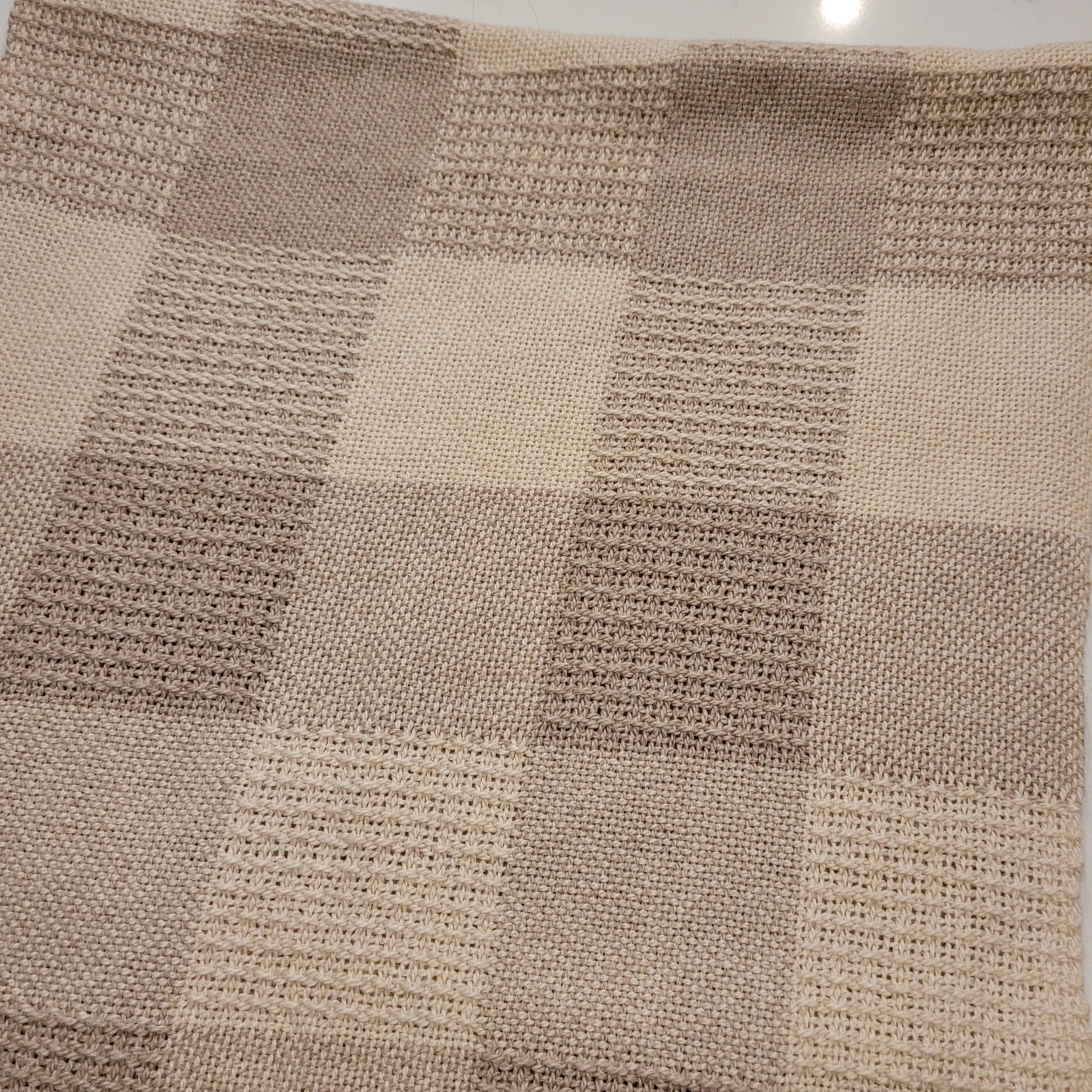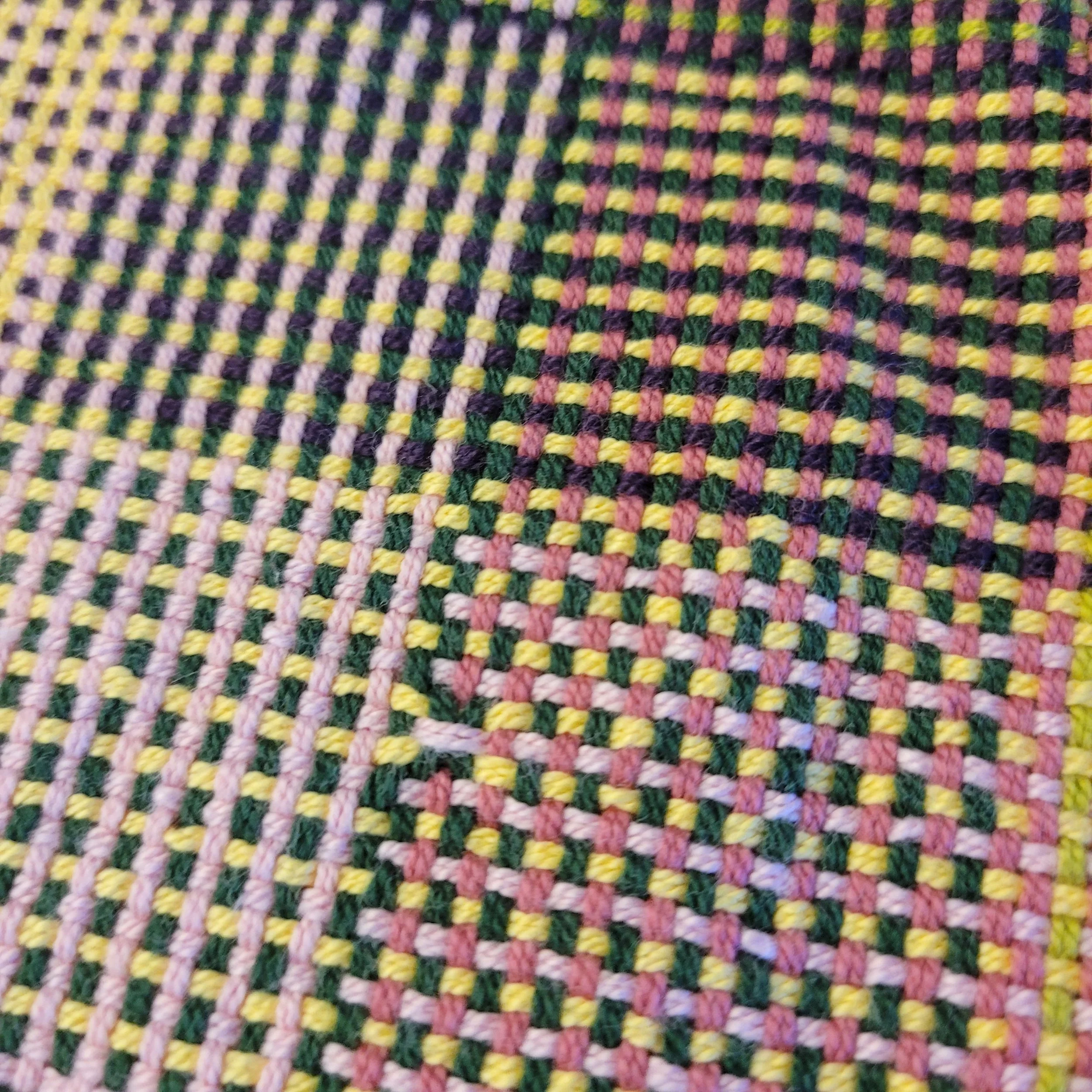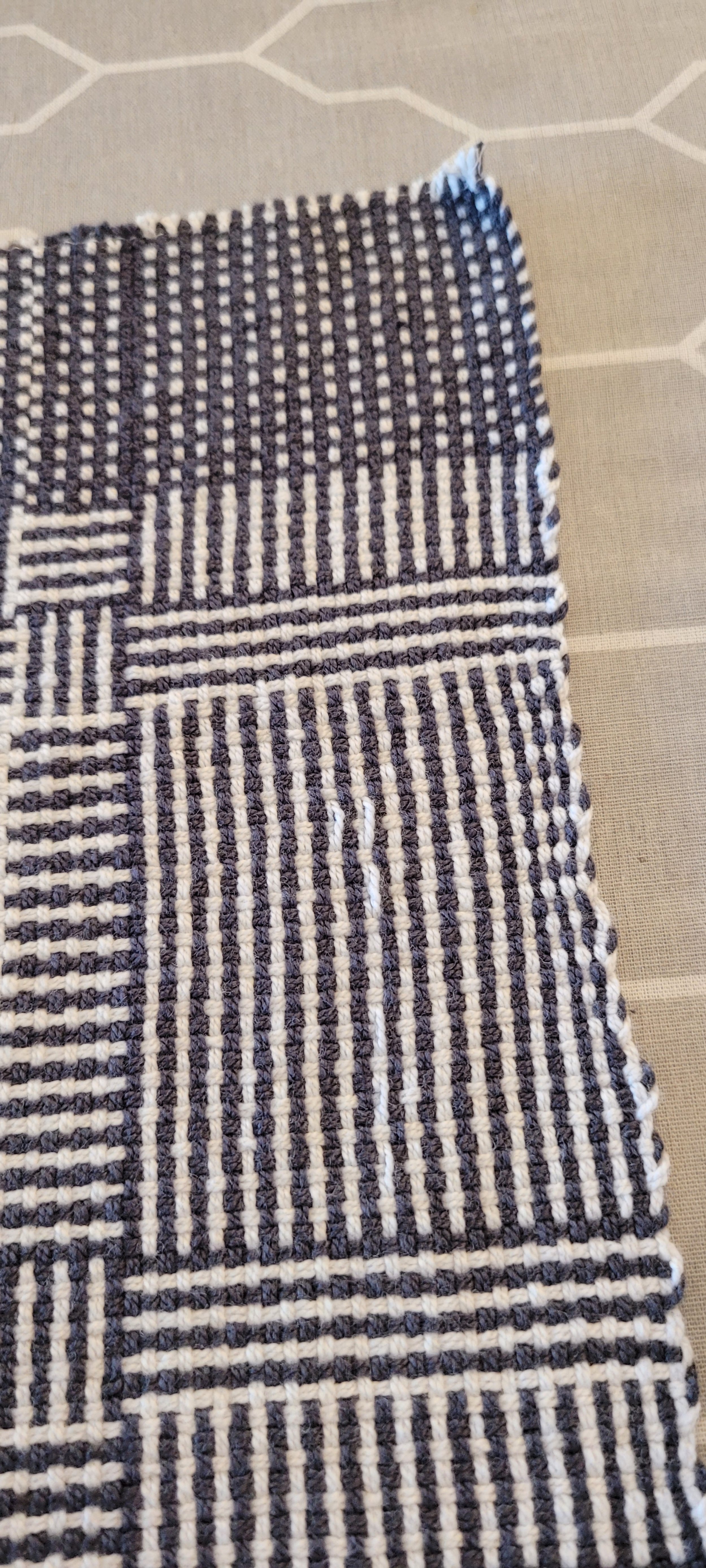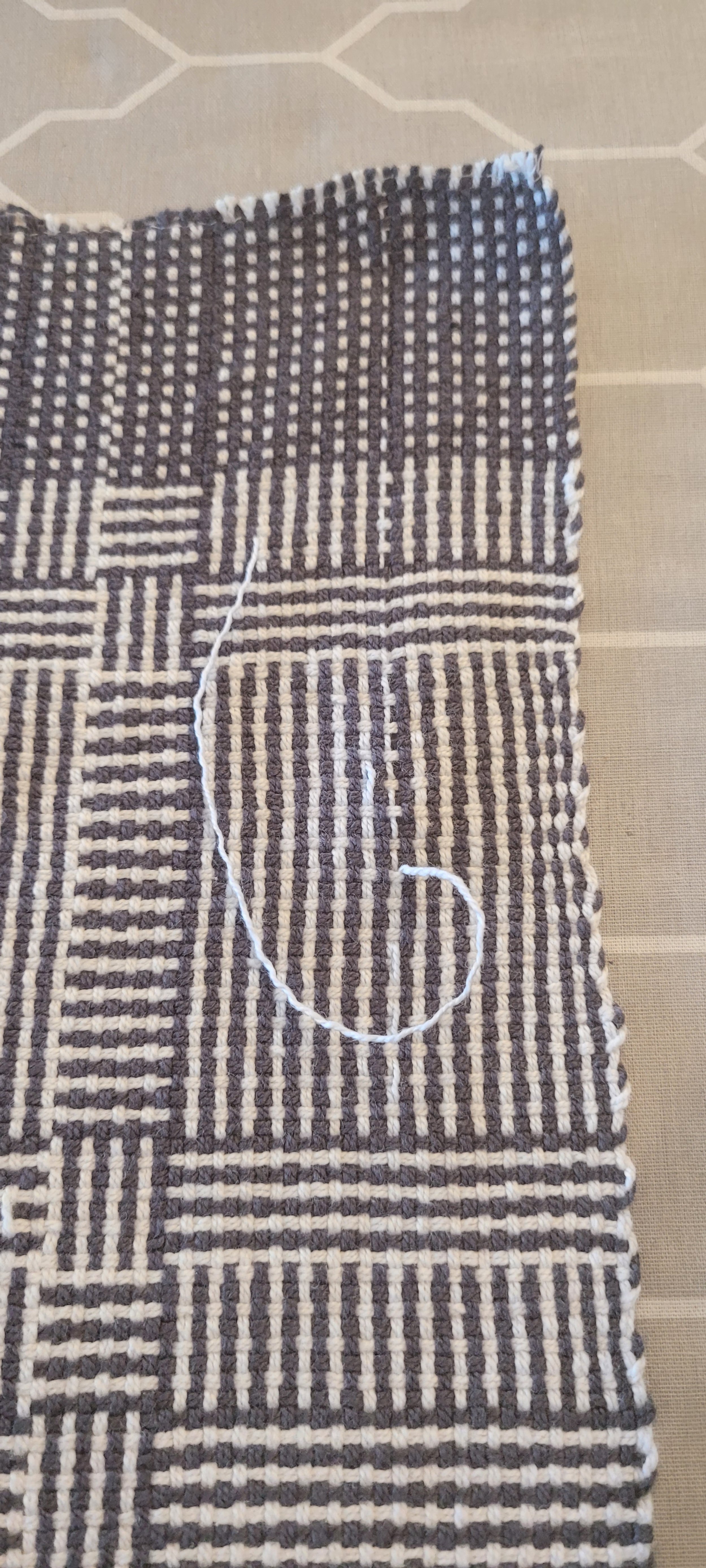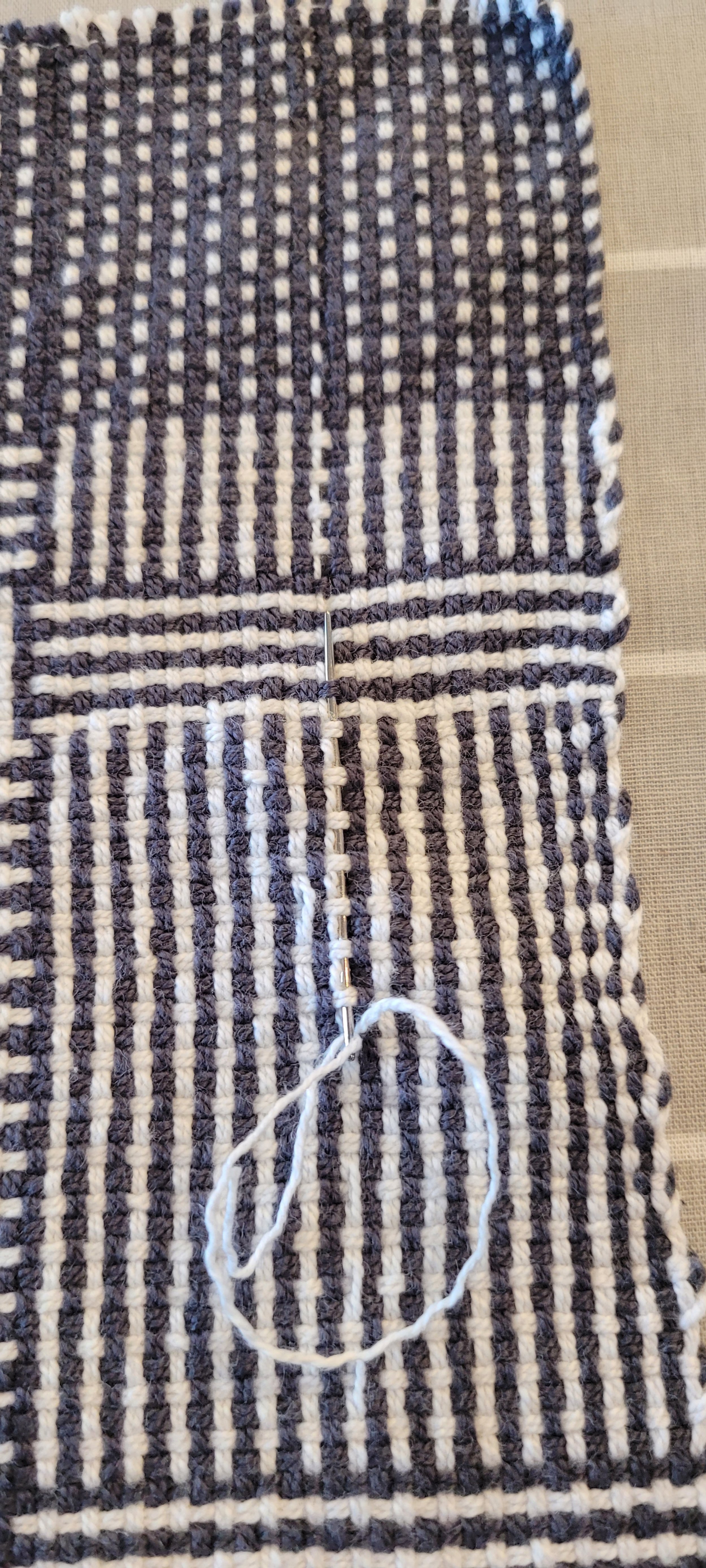Float Prevention and Intervention
There are 5 floats to the left of the needle
We all make mistakes, and that’s ok. Sometimes it’s not even a mistake, it’s just learning how not to do something. This is what I tell myself when I am learning something new. And on the topic of learning new things, let me digress for a moment. Be gentle with yourself…especially when you are learning something new. Pay attention to the words you use in your head and out loud. If you wouldn’t say those things to a friend, don’t say them to or about yourself. If you would be angry if someone said that to your friend, don’t say it to yourself. You are worthy of being treated with respect and honour by everybody, and by yourself in particular! By the way, I’ve been making some pretty spectacular mistakes lately!
Ok, I’ve stepped off one soapbox, and I’m about to step onto another, thank you for bearing with me! Mistakes do happen. I do not call mistakes design features. They can become a design feature if after you make the mistake, you like it and make a deliberate choice to continue weaving the mistake. There is a common saying that the Amish deliberately make a mistake in every quilt because only God is perfect. My research says this is a myth. And by the way, did you know that Persian rug makers have this same myth (it would offend Allah to make something perfect so a flaw must be inserted) and so do Native Americans in reference to The Great Spirit. (Here’s just one of the pages I searched.)
I wove this for Little Looms and didn’t see the mistake until it was off the loom. This was impossible to fix, so I kept it and wove another for Little Looms. I wear this scarf all the time and only I know it has a mistake.
So, a mistake is a mistake. And if it is a mistake, it should be fixed. I get that this can be a little controversial. If you decide not to fix mistakes, that’s ok. We are weaving for fun and maybe mental health, and maybe to learn to let go of perfectionism. If it is going to cause you mental anguish or ruin your joy, then embrace your mistakes: this may be what you need to learn from weaving. And you are no less a weaver because you leave your mistakes. Occasionally I leave a mistake because it is so hard to fix, or I know it will never be seen…and if it has a mistake, I get to keep it!
However, if you are striving to improve your skills, you will want to learn how to fix mistakes. The good news is that most mistakes are pretty easy to fix! Today we are going to look at floats, the easiest of all mistakes to fix. First we’ll look at what a float is, how to prevent them, and finally how to fix them when they happen. (And they will!)
See the pink float?
A float is when the fibre does not follow the proper over/under sequence. When we use pick-up sticks we are adding floats to create a pattern. A float may not look like much on the loom, but it really pops after wet finishing.
Float prevention begins with good tension. A float generally happens because a warp end is loose. Learning to wind well and using good warp separators will help. Here’s a couple of videos of my favourite way to wind my warp onto the back beam. Video 1 and Video 2. If you like to use the “Crank and Yank” method, here’s another video.
This is not a result of poor winding, rather the pick-up pattern is causing tension issues! S-hooks to the rescue!
It is possible that you will have done everything right, and you still have a loose warp end. This is why you should have s-hooks on hand! Just slip one on the loose end and it will add just enough tension to tighten up that end. If you don’t have s-hooks, get creative! A clothespin, pen, Lego blocks, or pill bottles will all work. Anything that will attach to the warp thread will work. I like s-hooks because they move with your warp as you wind forward.
Pay attention as you weave. My floats usually happen when I am weaving an up-shed. I can check for floats before the shuttle leaves the shed by flipping it up on edge and glancing to make sure there are no unusual spaces or extra ends on the stick.
Sometimes a float gets past me, and I don’t want to unweave. Floats can be easily fixed off the loom. In fact, I will often choose to fix the floats off the loom rather than unweave. (I hate unweaving, it does not bring me joy!)
You might need a little extra courage the first time you fix a float, after that you should have no troubles! The only tool you need is a darning needle. I have however been known to use my phone camera as a magnifying glass on really fine weaves.
I like to fix my floats before wet finishing. You might be able to see the fix before wet finishing, but it will disappear after wet finishing.
1. Pull out the offending warp to the mistake. It will be ok, I promise!
2. Thread the end into the darning needle and weave it back into the fabric (see the pictures below).
3. Be sure that you follow the pattern correctly if you have a pick-up pattern.
There! Now you can prevent and fix your floats, happy weaving!


